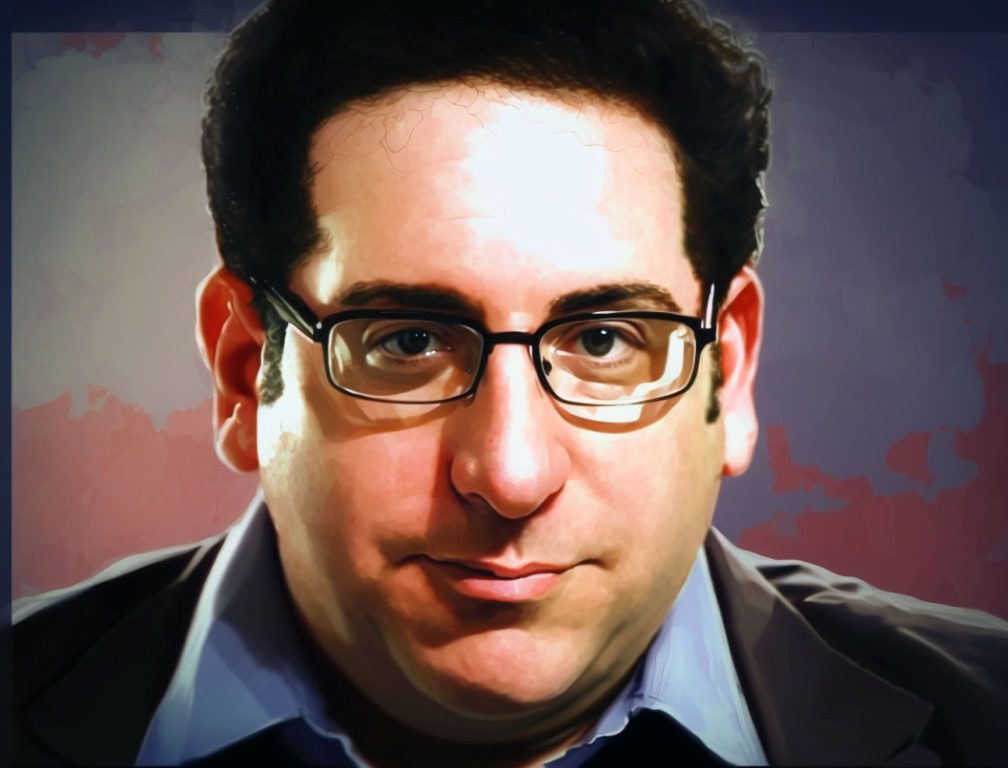Widely considered one of the biggest geniuses in computer science, Linus Torvalds is best known as the creator of the Linux kernel — the core of many of the world’s most popular operating systems.
He’s also made a name for himself as the creator of the Git version control system, used by millions of programmers to manage and organize their coding projects.

Stay One Step Ahead of Cyber Threats
But the man who created the most important software in history did so with an honorable philosophy: software should be secure, dependable, free, and open-source for all.
Linus Torvalds at a Glance
- Finnish computer whiz Linus Torvalds wrote his first code at age 11 in 1981 and had begun mastering advanced machine code within just a few years.
- After encountering the Unix operating system at the University of Helsinki in 1990, he set about creating his own PC-compatible version.
- Torvalds wanted his OS to be free and open-source, as he believed that all software should be available and accessible to anyone.
- He called the OS Linux — a combination of Linus and Unix — and enlisted the help of volunteer programmers to make his vision a reality.
- By 2000, Linux had become the OS of choice for software development, web servers, supercomputers, and other demanding applications.
- Torvalds also created Git, the free version control software preferred by over 90% of software developers.
- Today, Torvalds remains the lead developer of the Linux kernel, as well as a proponent of free and open-source software of all types.
The Life of Linus Torvalds
Torvalds’ Early Life

Born in Finland in 1969, Linus Torvalds first took an interest in computers in 1981, when he was just 11 years old.
Fascinated by his grandfather’s Commodore VIC-20 home computer, he began writing programs for it in the BASIC coding language. Before long, he had moved on to machine code — code that directly controls the computer’s CPU, widely considered extremely difficult to write.
Though his parents encouraged him to participate in sports and social outings, Torvalds knew that programming was his passion and devoted himself to it fully. He spent his secondary school years coding games for his Sinclair QL computer, then enrolled in the University of Helsinki as a computer science major in 1988.
Linus Meets Unix

After a year of compulsory military service, Torvalds returned to school in 1990, where he encountered the Unix operating system for the first time. He fell in love with its programming interface, which he found much more powerful than that of MS-DOS, the other predominant OS at the time.
In January of 1991, he purchased his first IBM-compatible PC, which was then state-of-the-art: 4MB of RAM and a 33MHz Intel 386 processor. However, it came with MS-DOS, and Torvalds’ search for a compatible Unix alternative turned up only one option: a partially closed-source Unix clone called MINIX that would take several months to ship to Finland.
When his copy of MINIX finally arrived, Torvalds found it somewhat disappointing. It lacked many of Unix’s features, didn’t always perform well, and was locked down such that he couldn’t access its entire source code.
He decided to take matters into his own hands and, in August of 1991, announced his plans online to the MINIX newsgroup. His new operating system would be based on MINIX and Unix, work with Intel chips, and be free for all to use and modify as they liked.
Within two months, he had a functional, though crude, prototype to debut. It was given the placeholder name Linux — a portmanteau of Linus and Unix — and, though Torvalds considered renaming it Freax (as in free, freak, and MINIX), the temporary name stuck.
Equally amazing, however, was Torvalds’ age — he was only 21 years old.
Linux Hits the Big Time

Bolstered by contributions from volunteer programmers he met on various newsgroups, Torvalds continued developing Linux for the next several years. This outside assistance was made possible by Linux’s GNU General Public License, which allowed anybody to view, use, modify, clone, or distribute the OS’s source code for free.
Building an OS from scratch was much more involved than Torvalds had anticipated, but he was determined to complete his creation and share it with the world.
In March of 1994, that dream came to fruition: Linux kernel version 1.0, the first stable production version, was released to the public. And though many inventors would see this as an opportunity to celebrate and relax, Torvalds immediately went back to working on his creation.
On its surface, Linux was more difficult to use than other operating systems, such as Windows. But its power, reliability, and versatility made it an instant hit with programmers, techies, and those who shared Torvalds’ philosophy that software should be free and open-source.
Torvalds Makes a Move

1996 was a huge year for Torvalds. A newly-discovered asteroid, 9793 Torvalds, was named after him, and his first daughter was born later that year.
Just a few days later, he released Linux kernel 2.0, which featured massive performance upgrades and support for multiple new processors.
But the biggest change arose as a result of a trip to California to visit Transmeta, a company that developed microprocessors. Transmeta offered him a job, which he accepted, and in early 1997 he relocated his family to the US.
Torvalds’ arrangement with Transmeta allowed him to continue devoting ample time to Linux, which was a blessing. The OS was now running on well over 3 million machines, and large companies like Netscape, Corel, and Oracle were beginning to produce Linux-compatible versions of their software.
By 1999, Linux had over 7 million users, and new companies devoted solely to Linux software and spinoff distributions were forming. Two of these companies, Red Hat and VA Linux, gifted Torvalds with stock options when they went public that year, and the humble developer was now suddenly a millionaire.
His good fortune continued through the new millennium: by January of 2000, the Linux-based Apache web server hosted 56% of the entire internet. And in 2001, IBM announced that it was committing $1 billion to Linux research and development.
Torvalds Switches Gears
In 2003, Torvalds left his job at Transmeta for a position with Open Source Development Labs (now the Linux Foundation), a nonprofit group dedicated to supporting open-source software, especially Linux. The move allowed him to focus on Linux full-time, but it also gave him the opportunity to work on new projects.
One of these projects was Git, version control software that he originally created to keep track of changes to the Linux kernel. Git could be used to view code histories, push updates and patches, and coordinate with others working on the same code.
Seeing that Git could be useful to other developers, Torvalds released Git as free and open-source in April of 2005. It was an instant hit, and today it’s the version control software of choice for over 90% of developers worldwide.
Torvalds Today

Today, Torvalds maintains his position at the Linux Foundation and continues his work on the Linux kernel. Though anybody can submit contributions to the codebase, he remains the final authority on any proposed changes.
Linux has continued to grow, with 43% of all devices worldwide relying on the Linux kernel. This is largely due to the popularity of the Android mobile OS, which is built on top of the Linux kernel.
47% of software developers prefer Linux, and they have their pick of over 600 different distributions. These range from consumer-friendly Windows and macOS competitors like Ubuntu to advanced niche OSes like Kali Linux.
96% of the top 1 million websites run on the Linux kernel, as do all of the world’s top 500 supercomputers.
And though only 2% of the current Linux kernel source code was written by Torvalds, it’s more impressive than it sounds: the kernel runs on nearly 28 million lines of code, and Torvalds has written over 550,000 lines of it!
Linus Torvalds: A Programmer for the People
When Linus Torvalds first conceived of Linux, he had no idea that his concept would one day power the majority of the computing world.
And though he’s garnered fame and fortune for his brilliant invention, his motivation through the years has remained selfless. In an era of corporate greed and obsessive competition, Torvalds stands out as an altruistic iconoclast: a champion of reliable, powerful, secure, free, and open-source software.
The Mind Behind Linux: Linus Torvalds (Video)
Linus Torvalds Guided Tour of His Home Office (Video)
"Amateurs hack systems, professionals hack people."
-- Bruce Schneier, a renown computer security professional






